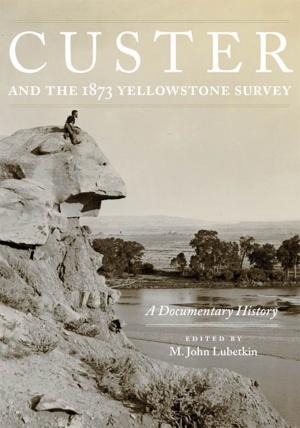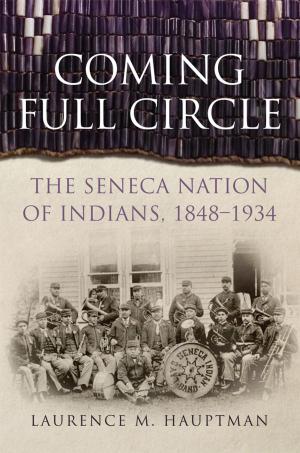The Students of Sherman Indian School
Education and Native Identity since 1892
Nonfiction, Social & Cultural Studies, Social Science, Cultural Studies, Native American Studies, History, Americas, Native American, United States| Author: | Diana Meyers Bahr | ISBN: | 9780806145136 |
| Publisher: | University of Oklahoma Press | Publication: | April 22, 2014 |
| Imprint: | University of Oklahoma Press | Language: | English |
| Author: | Diana Meyers Bahr |
| ISBN: | 9780806145136 |
| Publisher: | University of Oklahoma Press |
| Publication: | April 22, 2014 |
| Imprint: | University of Oklahoma Press |
| Language: | English |
Sherman Indian High School, as it is known today, began in 1892 as Perris Indian School on eighty acres south of Riverside, California, with nine students. Its mission, like that of other off-reservation Indian boarding schools, was to "civilize" Indian children, which meant stripping them of their Native culture and giving them vocational training. Today, the school on Magnolia Avenue in Riverside serves 350 students from 68 tribes, and its curricula are designed to both preserve Native languages and traditions and prepare students for life and work in mainstream American society. This book offers the first full history of Sherman Indian School’s 100-plus years, a history that reflects federal Indian education policy since the late nineteenth century.
Sherman Institute's historical trajectory features the abuse and exploitation familiar from other accounts of life at Indian boarding schools—children punished and humiliated for maintaining Native ways and put to work as manual laborers. But this book also brings to light the ways Native children managed to maintain their dignity, benefited from interacting with students from other tribes, and often even expressed appreciation for the experiences at Sherman. Alternating periods of assimilation and self-determination form a critical part of the story Diana Meyers Bahr tells, but her interpretation of the students’ complex experiences is more subtle than that. From the accounts of students, educators, and administrators over the years, Bahr draws a picture of Sherman students successfully navigating a complicated middle course between total assimilation and total rejection of white education.
The ambivalence of such a middle way has meant confronting painful moral choices—and ultimately it has deepened students’ appreciation for the diverse cultures of Indian America and heightened their awareness of their own tribal identity. The ramifications can be seen in today's Sherman Indian High School, a repository of the living history so deftly and thoroughly chronicled here.
Sherman Indian High School, as it is known today, began in 1892 as Perris Indian School on eighty acres south of Riverside, California, with nine students. Its mission, like that of other off-reservation Indian boarding schools, was to "civilize" Indian children, which meant stripping them of their Native culture and giving them vocational training. Today, the school on Magnolia Avenue in Riverside serves 350 students from 68 tribes, and its curricula are designed to both preserve Native languages and traditions and prepare students for life and work in mainstream American society. This book offers the first full history of Sherman Indian School’s 100-plus years, a history that reflects federal Indian education policy since the late nineteenth century.
Sherman Institute's historical trajectory features the abuse and exploitation familiar from other accounts of life at Indian boarding schools—children punished and humiliated for maintaining Native ways and put to work as manual laborers. But this book also brings to light the ways Native children managed to maintain their dignity, benefited from interacting with students from other tribes, and often even expressed appreciation for the experiences at Sherman. Alternating periods of assimilation and self-determination form a critical part of the story Diana Meyers Bahr tells, but her interpretation of the students’ complex experiences is more subtle than that. From the accounts of students, educators, and administrators over the years, Bahr draws a picture of Sherman students successfully navigating a complicated middle course between total assimilation and total rejection of white education.
The ambivalence of such a middle way has meant confronting painful moral choices—and ultimately it has deepened students’ appreciation for the diverse cultures of Indian America and heightened their awareness of their own tribal identity. The ramifications can be seen in today's Sherman Indian High School, a repository of the living history so deftly and thoroughly chronicled here.















